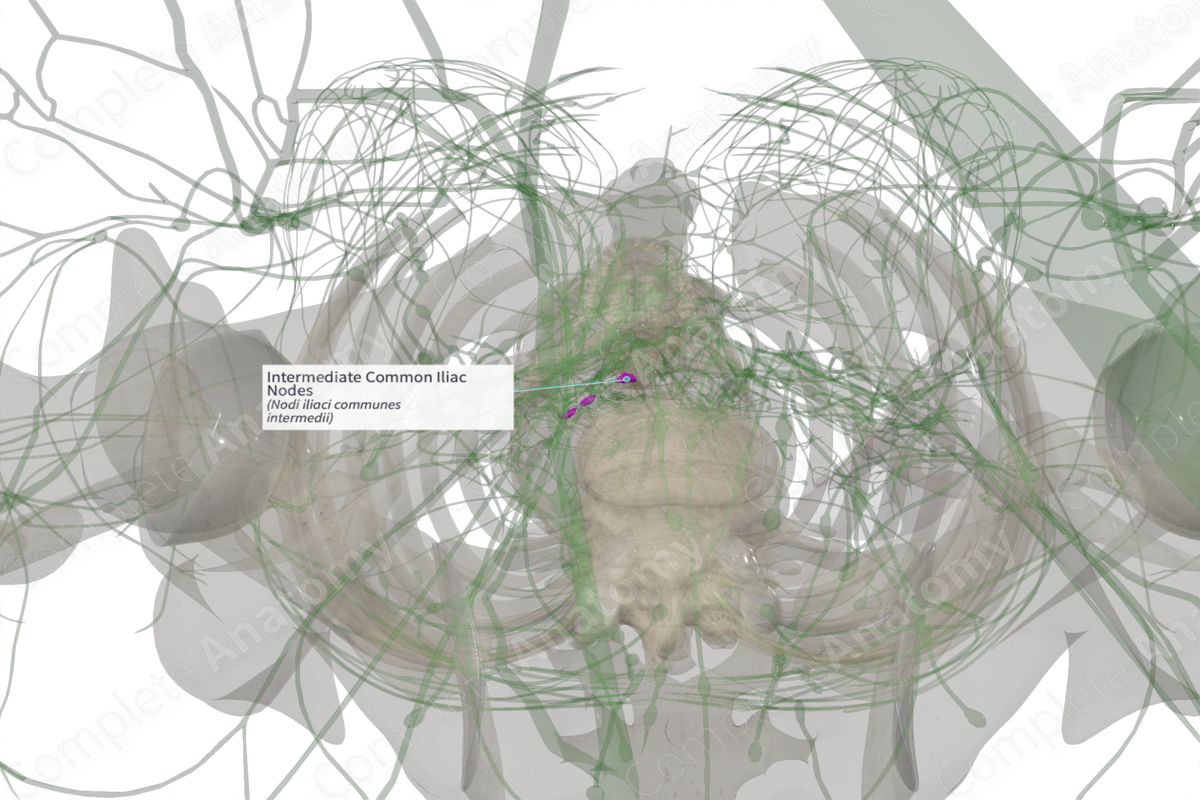
Quick Facts
Location: Posterior to the common iliac vein.
Drainage: Lower limb.
Direction of Flow: Left and right lumbar trunk > cisterna chyli > thoracic duct.
Related parts of the anatomy
Description:
Description: (Location & Drainage)
The common iliac lymph nodes are responsible for lymph drainage of the entire lower limb since they receive efferent vessels from the internal and external iliac nodes.
The common iliac lymph nodes can be further subdivided into medial, intermediate and lateral lymph nodes.
The intermediate common iliac lymph nodes form a middle chain of two to five nodes (Földi et al., 2012). They are located posterior to the common iliac vein, lateral to the fifth lumbar vertebra and medial to the psoas major muscle.
The efferent vessels of the intermediate and lateral common iliac lymph nodes unite at the level of the fourth lumbar vertebra to form the left and right lumbar trunks.
References
Földi, M., Földi, E., Strößenreuther, R. and Kubik, S. (2012) Földi's Textbook of Lymphology: for Physicians and Lymphedema Therapists. Elsevier Health Sciences.
Description:
Description: (Location & Drainage)
The common iliac lymph nodes are responsible for lymph drainage of the entire lower limb since they receive efferent vessels from the internal and external iliac nodes.
The common iliac lymph nodes can be further subdivided into medial, intermediate and lateral lymph nodes.
The intermediate common iliac lymph nodes form a middle chain of two to five nodes (Földi et al., 2012). They are located posterior to the common iliac vein, lateral to the fifth lumbar vertebra and medial to the psoas major muscle.
The efferent vessels of the intermediate and lateral common iliac lymph nodes unite at the level of the fourth lumbar vertebra to form the left and right lumbar trunks.




